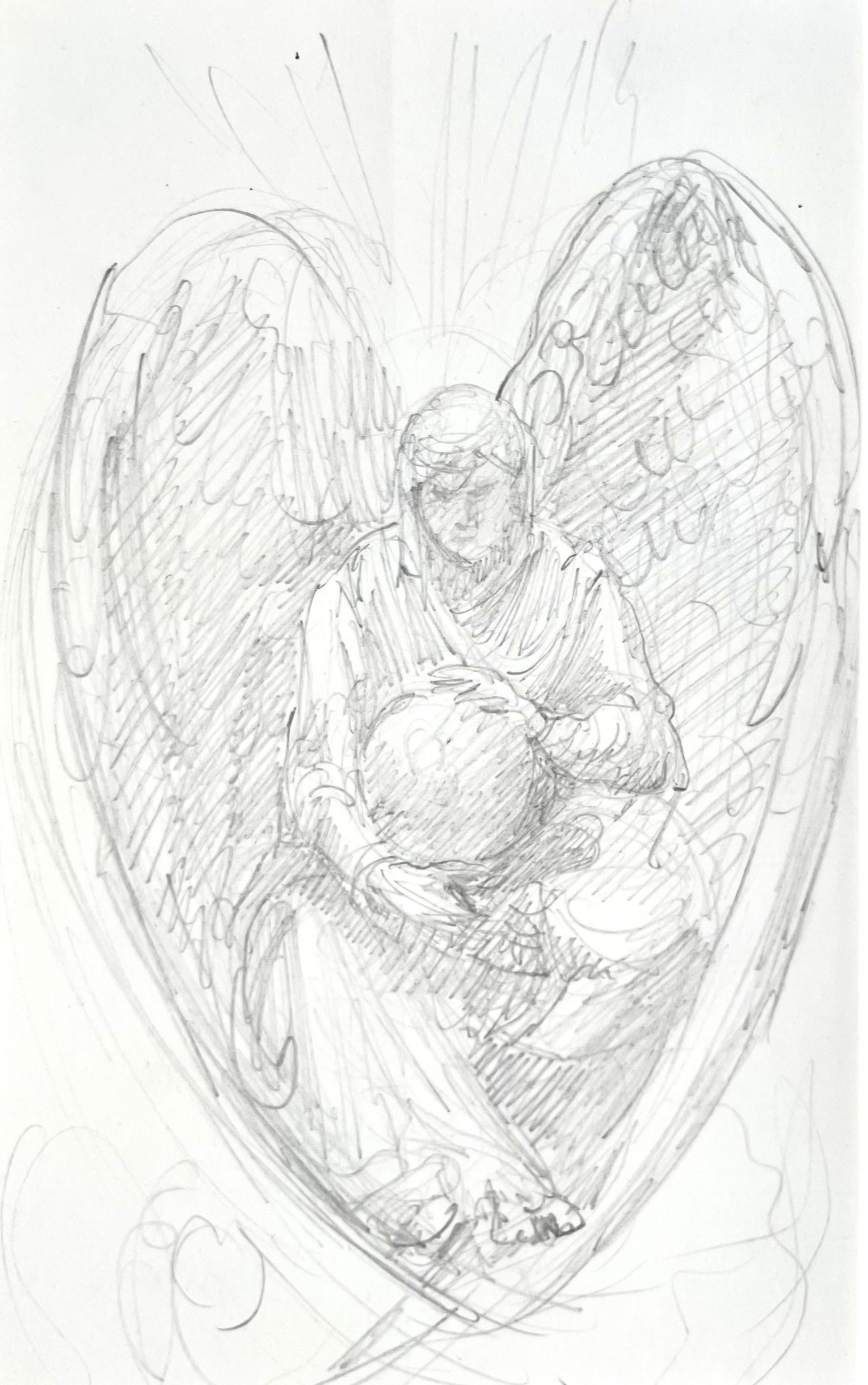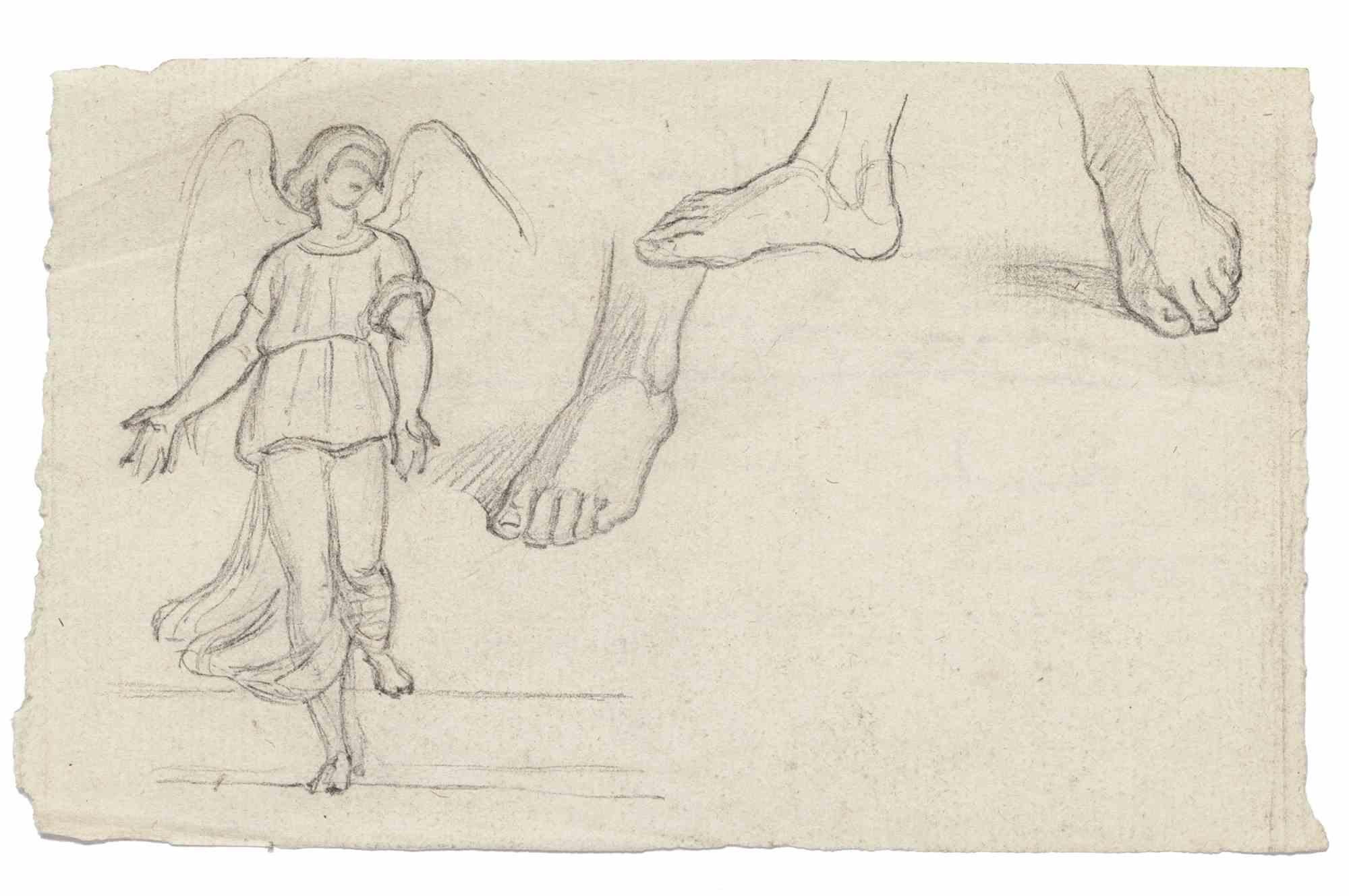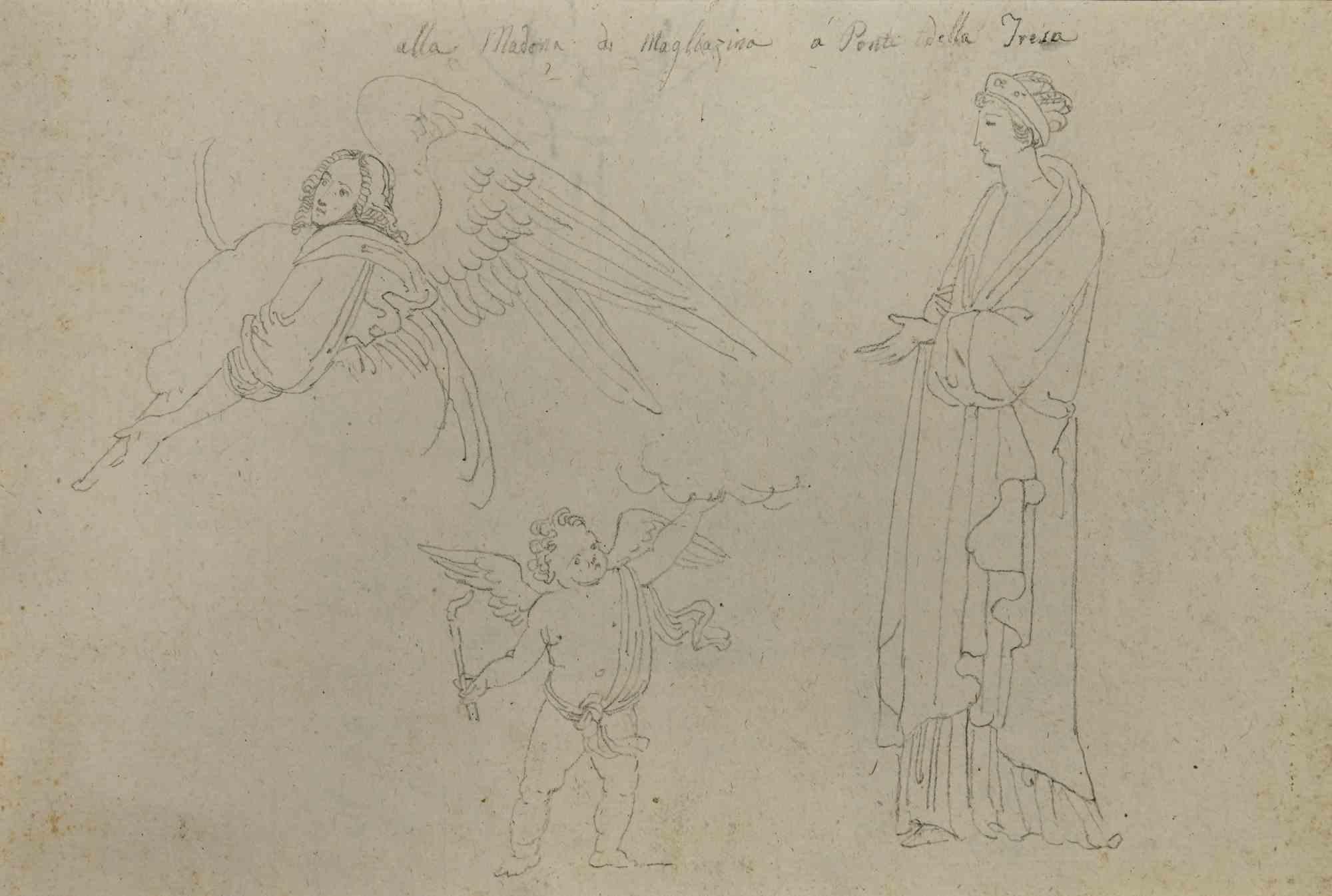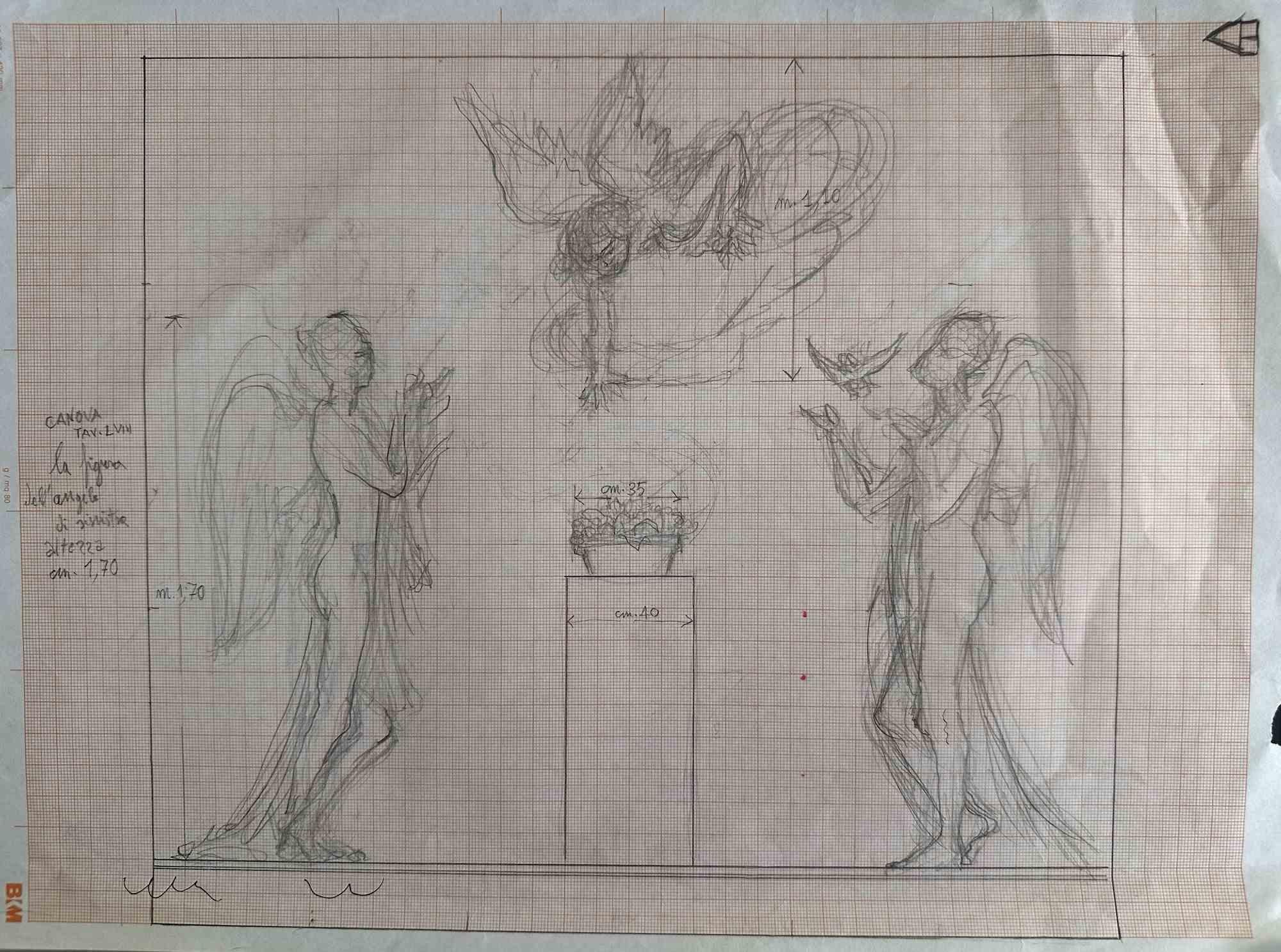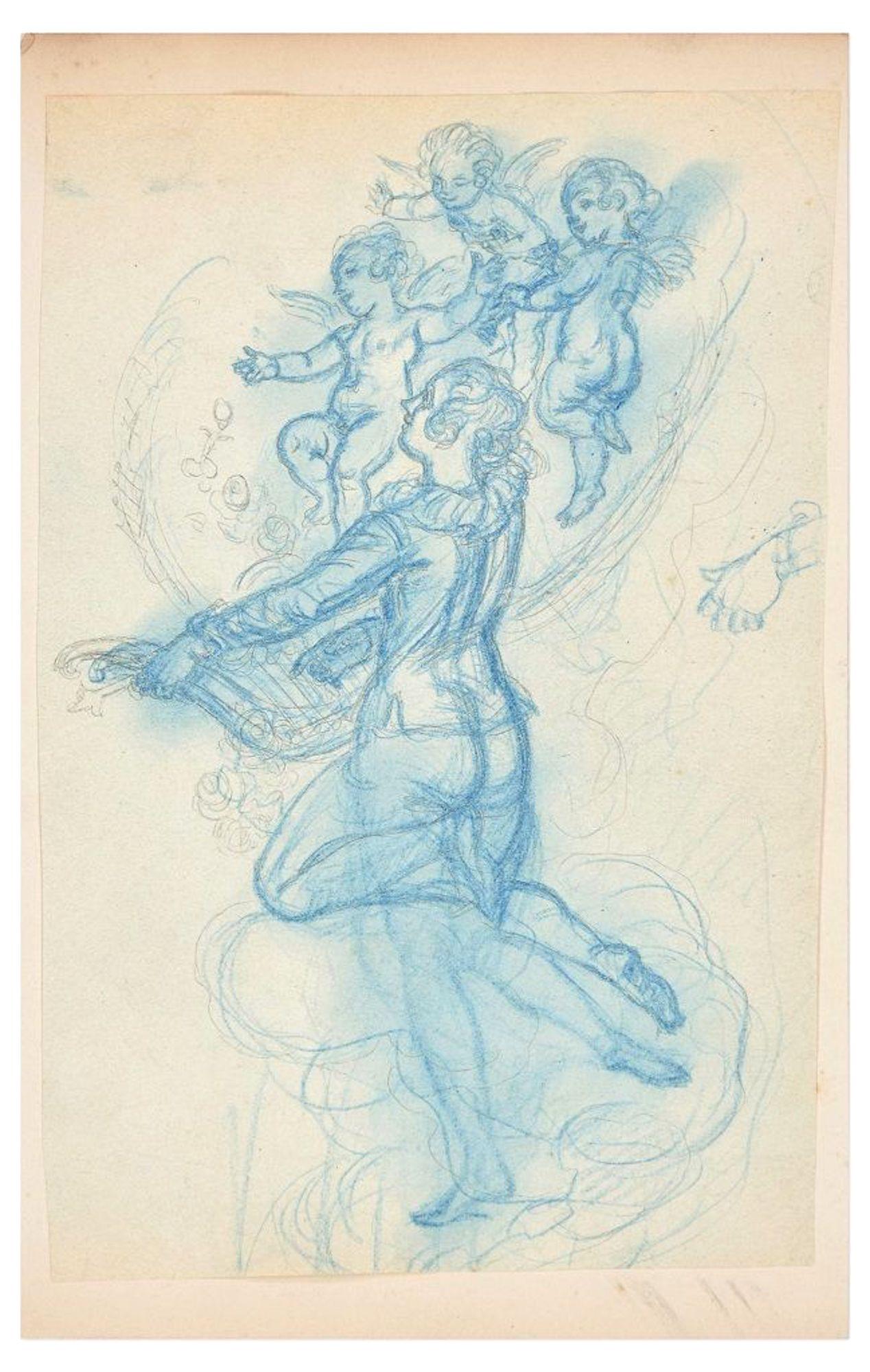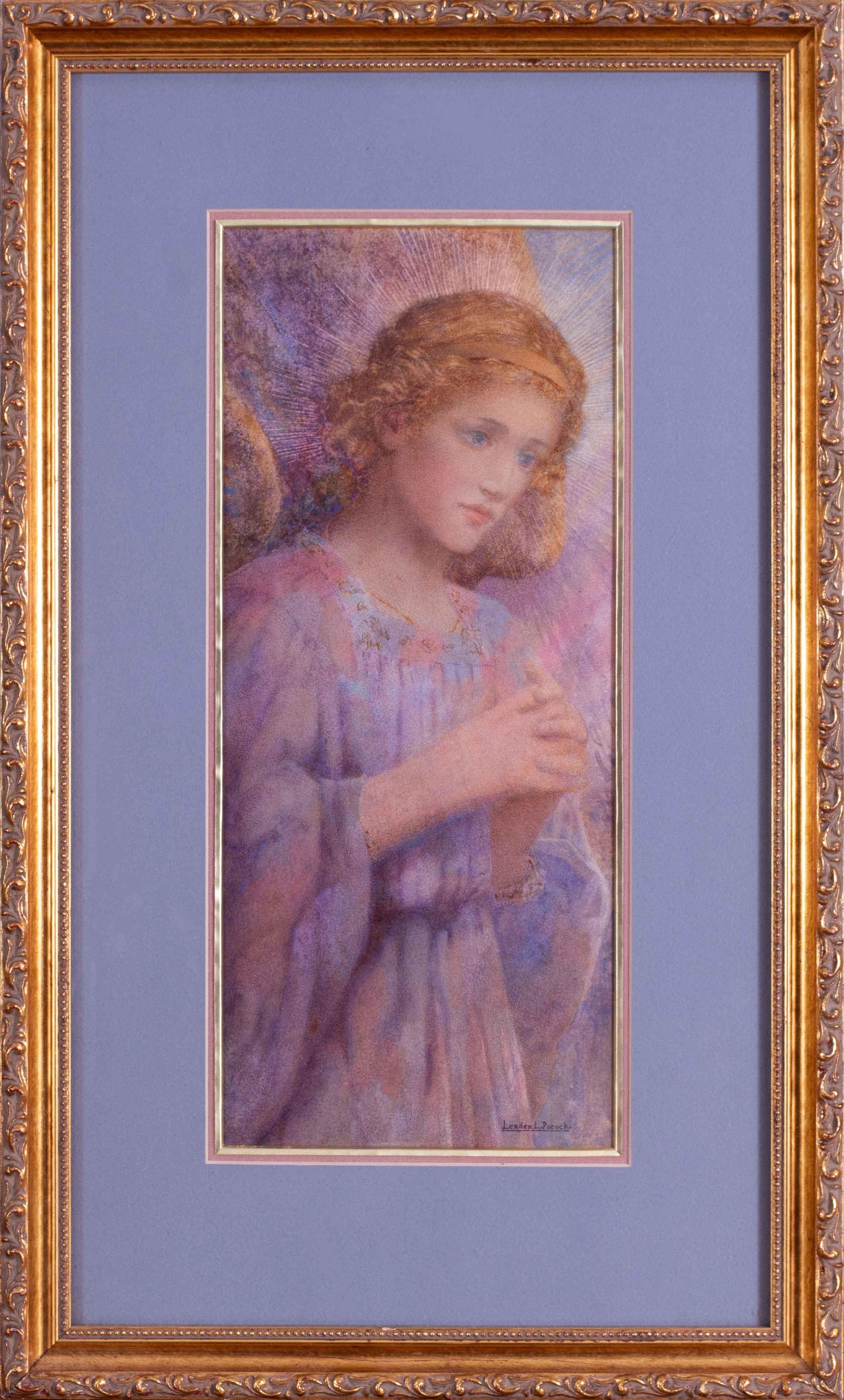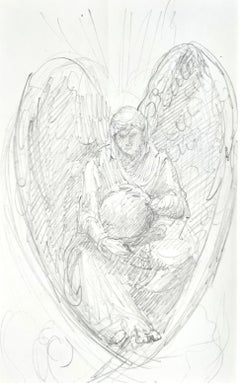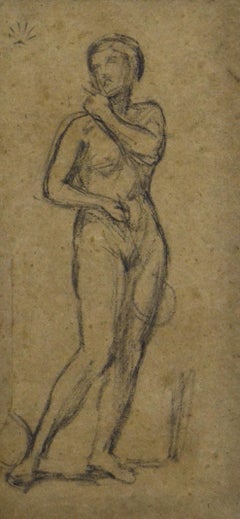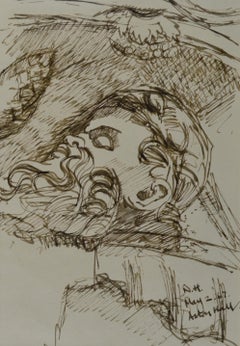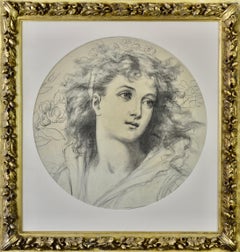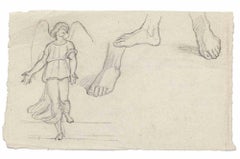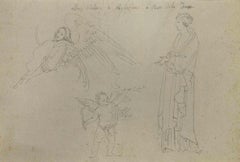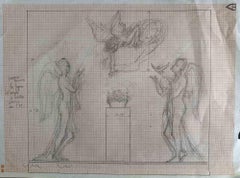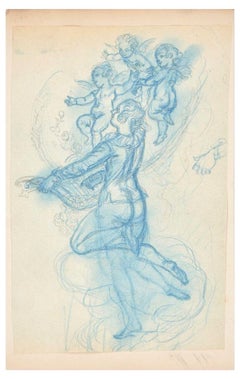Items Similar to Study of an Angel by British Pre-Raphaelite artist Sir William Blake Richmond
Want more images or videos?
Request additional images or videos from the seller
1 of 2
Sir William Blake RichmondStudy of an Angel by British Pre-Raphaelite artist Sir William Blake Richmondcirca 1900
circa 1900
$1,307.72
£950
€1,116.81
CA$1,809.01
A$1,993.65
CHF 1,043.74
MX$24,488.33
NOK 13,114.85
SEK 12,274.46
DKK 8,338.56
About the Item
SIR WILLIAM BLAKE RICHMOND, RA
(1842-1921)
Study of an Angel
Pencil on the artist’s writing paper for Beavor Lodge, Hammersmith
Unframed
22.5 by 17 cm., 9 by 6 ¾ in.
(mount size 37 by 31.5 cm., 14 ½ by 12 ½ in.)
William Blake Richmond was the son of the painter and watercolourist Goerge Richmond. After first studying with his father and having early coaching from John Ruskin, he entered the Royal Academy Schools in 1857. He first exhibited at the Royal Academy in 1861 and established a career as a successful painter of large neo-classical subjects and portraits. Following a trip to Italy in 1864 he came under the influence of Frederic Leighton and Giovanni Costa and became a devotee of plein air landscape painting. He was also a designer of stained glass and mosaics, his major work in this medium being the decorations below the dome and in the apse of St Paul’s Cathedral.
- Creator:
- Creation Year:circa 1900
- Dimensions:Height: 8.86 in (22.5 cm)Width: 6.7 in (17 cm)
- Medium:
- Movement & Style:
- Period:
- Condition:
- Gallery Location:London, GB
- Reference Number:Seller: 25191stDibs: LU1028310459702
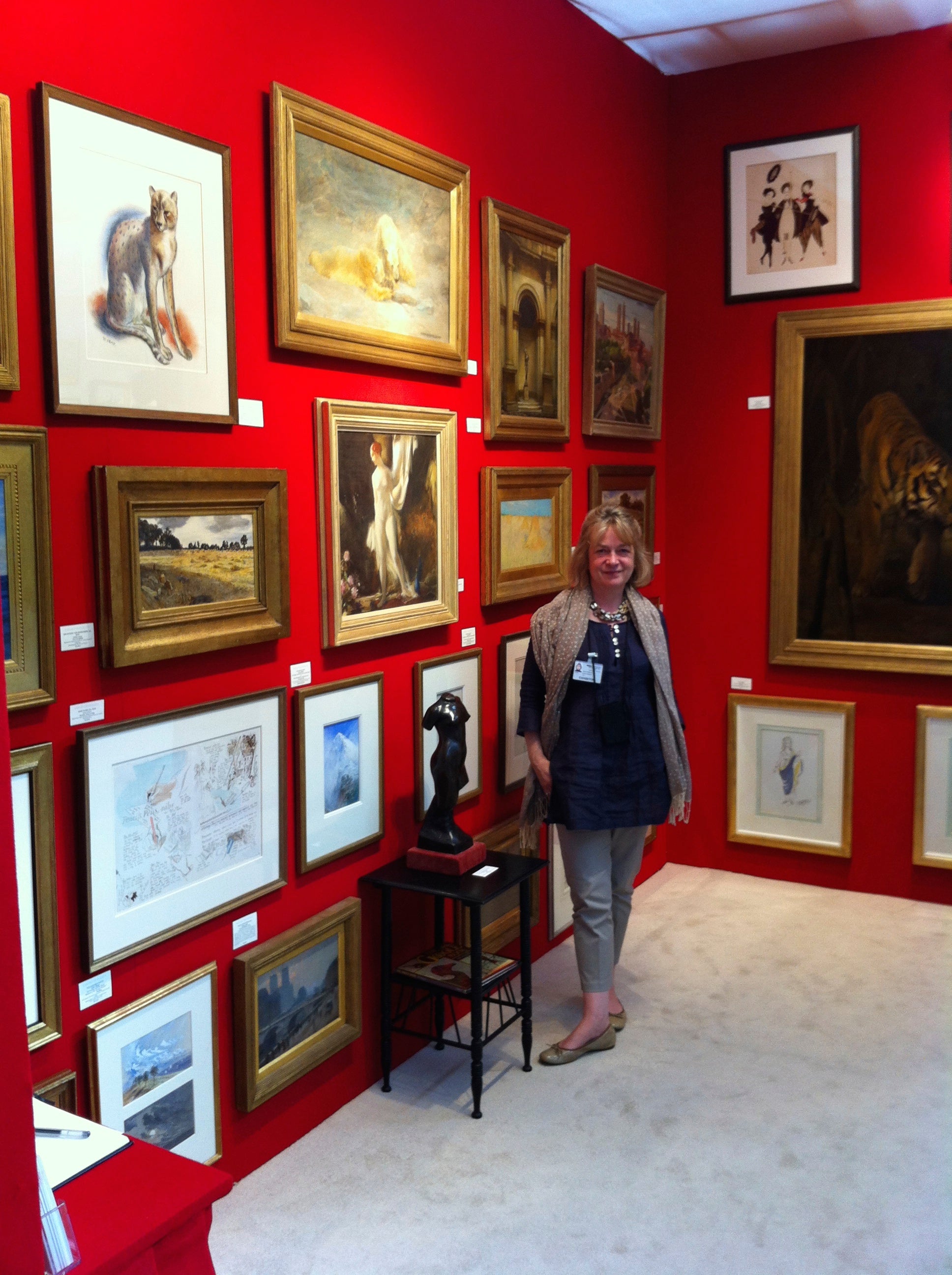
About the Seller
4.9
Vetted Professional Seller
Every seller passes strict standards for authenticity and reliability
Established in 2004
1stDibs seller since 2018
62 sales on 1stDibs
Typical response time: 2 hours
- ShippingRetrieving quote...Shipping from: Banbury, United Kingdom
- Return Policy
Authenticity Guarantee
In the unlikely event there’s an issue with an item’s authenticity, contact us within 1 year for a full refund. DetailsMoney-Back Guarantee
If your item is not as described, is damaged in transit, or does not arrive, contact us within 7 days for a full refund. Details24-Hour Cancellation
You have a 24-hour grace period in which to reconsider your purchase, with no questions asked.Vetted Professional Sellers
Our world-class sellers must adhere to strict standards for service and quality, maintaining the integrity of our listings.Price-Match Guarantee
If you find that a seller listed the same item for a lower price elsewhere, we’ll match it.Trusted Global Delivery
Our best-in-class carrier network provides specialized shipping options worldwide, including custom delivery.More From This Seller
View AllSir William Blake Richmond - An Angel - 19th Century British Drawing
By Sir William Blake Richmond
Located in London, GB
SIR WILLIAM BLAKE RICHMOND, RA
(1842-1921)
Study of an Angel
Pencil
Unframed, in mount only
18.5 by 10.5 cm., 7 ¼ by 4 ¼ in.
(mount size 32 by 25 cm., 12 ½ by 10 in.)
William Bl...
Category
Late 19th Century Pre-Raphaelite Figurative Drawings and Watercolors
Materials
Pencil
Study for Battledore & Shuttlecock - British Aesthetic Movement drawing
By Albert Joseph Moore
Located in London, GB
ALBERT JOSEPH MOORE, ARWS
(1841-1893)
Study for Battledore & Shuttlecock
Signed with anthemion
Chalk on brown paper
27 by 13 cm., 10 ½ by 5 in.
(frame size 49 by 34.5 cm., 19 ¼ b...
Category
1870s Aesthetic Movement Figurative Drawings and Watercolors
Materials
Chalk
Study for a Fallen Statue, Aston Hall, 20th Century British drawing by Hickman
By Neville Hickman
Located in London, GB
NEVILLE HICKMAN
(1930-2012)
Study of a Statue, Aston Hall
Signed with initials, inscribed and dated: May 2 67. Aston Hall
Pen and ink, unframed
25.5 by 17.5 cm., 10 by 7 in.
(mount size 34.5 by 28 cm., 13 ½ by 11 in.)
Aston Hall is a magnificent seventeenth century red-brick mansion situated in a public park on the north side of Birmingham. It was built between 1618 and 1635 by Sir Thomas Holte, the head of an important Warwickshire family and was one of the last great Jacobean houses...
Category
Mid-20th Century Realist Figurative Drawings and Watercolors
Materials
Ink
Spring - Chalk design drawing for a Minton plaque by Herbert Wilson Foster
By Herbert Wilson Foster
Located in London, GB
HERBERT WILSON FOSTER
(1846-1929)
Spring
Inscribed with title beneath the mount
Chalk, circular
Framed
Diameter 42 cm., 16 ½ in.
(frame size 61 by 58 cm., 24 by 22 ¾ in.)
Herbert Wilson Foster was born in Endon, Staffordshire. He attended Hanley School of Art before continuing his studies in London, Belgium and France. His paintings of rural and domestic subjects were exhibited at the Royal Academy between 1873 and 1899. In 1893 he accepted a teaching position at the Nottingham School of Art, where his pupils included Laura Knight and Harold Knight. Works by him are in the collections of the Minton archives; the Wisbech & Fenland Museum; Leicester Art Gallery; Rushcliffe Council and Nottingham Castle Museum.
In addition to his work as a painter he worked as a porcelain painter, working at one point on the tile panels in the Victoria & Albert Museum. He is known to have worked at Mintons from 1872 where he specialized in portraits of contemporary personalities, including members of the Royal Family. This head of a girl was probably intended for a painted ceramic wall charger...
Category
1870s Realist Figurative Drawings and Watercolors
Materials
Chalk, Pencil
Siegfried
By Maxwell Armfield, RWS
Located in London, GB
MAXWELL ARMFIELD, RWS.
(1882-1972)
Siegfried
Signed, inscribed and dated l.c.: MAXWELL ARMFIELD/MDCCCCIV [1904] PARIS;SIEGFRIED/ACT III
Pencil and watercolour
Framed
24 by 16 cm., 9 ½ by 6 ¼ in.
(frame size 42.5 by 34.5 cm., 16 ¾ by 13 ½ in.)
Provenance:
Fine Art Society, London, 1979.
Born at Ringwood, Hampshire, of Quaker parents, his father being a milling engineer, Armfield studied at the Birmingham School of Art under Arthur Gaskin and Joseph Southall who taught him the tempera technique he was to practice for the rest of his life. In September 1902, after visiting Italy at the suggestion of Gaskin, he went to Paris, enrolling at the Academie de la Grande Chaumiere and sharing a studio with three other students – Norman Wilkinson (also from Birmingham), Keith Henderson and the sculptor Gaston Lachaise. Returning to London the following year, he embarked on the series of one-man exhibitions that were henceforth to mark his career, showing first at Robert Ross...
Category
Early 1900s Pre-Raphaelite Portrait Drawings and Watercolors
Materials
Watercolor
Charles Sims, RA - Nude Drapery Study for the Royal Academy Mural
Located in London, GB
CHARLES SIMS, RA, RWS, RSW
(1873-1928)
Drapery Study for the Royal Academy Arts & Crafts Mural
Pencil, squared for transfer
Unframed, in conservation mount
17.5 by 24 cm., 7 by 9 ...
Category
1910s Realist Figurative Drawings and Watercolors
Materials
Pencil
You May Also Like
Angel - Original Drawing - Early 20th Century
Located in Roma, IT
Angel is an original drawing in pencil on paper realized by an Anonymous artist in the early 20th Century.
Good Conditions.
The artwork is depicted through free strokes in a well-b...
Category
Early 20th Century Modern Figurative Drawings and Watercolors
Materials
Pencil
Angels - Drawing - 1890s
Located in Roma, IT
Angels is a beautiful pencil drawing on ivory-colored paper, realized in the 1890s by an unknown artist.
Good conditions with some foxing.
The artwork realized through deft pen st...
Category
1890s Modern Figurative Drawings and Watercolors
Materials
Paper
Angels of Canova - Drawing by Leo Guida - 1950s
By Leo Guida
Located in Roma, IT
Angels of Canova is a pencil drawing on paper realized by an anonymous artist in the mid-20th century.
Good conditions with slight folding.
Category
1950s Contemporary Figurative Drawings and Watercolors
Materials
Pencil
Study with three Angels - Drawing by A. Willette - End of 19th Century
Located in Roma, IT
Study with three Angels is a gorgeous pastel drawing realized by Adolphe Léon Willette, a French illustrator, painter, caricaturist, lithographer, and architect. The state of preservation is very good. The paper is applied on a cardboard measuring 22.8 x 14.3 cm. It represents a figure in three quarters, half naked, with different afterthoughts on the position of the legs, whilst playing a lyre. Above, three puttos throw flowers.
The artist Adolphe Léon Willette, with his irreverent art...
Category
Late 19th Century Modern Figurative Drawings and Watercolors
Materials
Color Pencil
British, turn of the century watercolour of an angel by Lexden Lewis Pocock
Located in Petworth, West Sussex
Lexden Lewis Pocock (British, 1850 – 1919)
An angel
Watercolour on paper
Signed ‘Lexden. L. Pockock’ (lower right)
15.1/4 x 6.1/2 in. (38.8 x 16.3 cm.)
Lexden Lewis Pocock (1850–191...
Category
20th Century Pre-Raphaelite Figurative Drawings and Watercolors
Materials
Paper, Watercolor
Study for Caryatid - Original Pencil by Charles Walch - Early 20th century
By Charles Walch
Located in Roma, IT
Study for Caryatid is an original pencil and white lead drawing on ivory paper, realized by Charles Walch (1896-1948).
In good conditions, except for th...
Category
Early 20th Century Modern Figurative Drawings and Watercolors
Materials
Pencil
More Ways To Browse
Blake Anding
Painting By Blake
Antique Plein Air
Pre Raphaelite
St Pauls Cathedral
Painting St Pauls Cathedral
Paintings Pre 1900
John Blake
Antique Angel Paintings
John Lodge
Neo Classical Painting Landscape
Frederic Leighton
Pencil Angels
Ink Drawings 18th Century
Pencil 18th
John Morley
Antique Chalk Art
Vintage Ballpoint Pens
